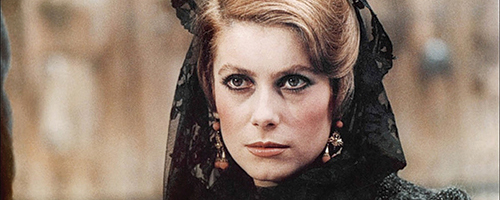TBA:09, the annual Time-Based Art Festival by Portland Institute for Contemporary Art, hit Portland with a frenzy unsurpassed by previous years. The Works, a mélange of installation, performance, and conventional art in the historic Washington High School classrooms and auditorium in Southeast Portland, attracted people from all different walks of life like never before.
Time-Based madness is happening now
TBA:09, the annual Time-Based Art Festival by Portland Institute for Contemporary Art, hit Portland with a frenzy unsurpassed by previous years. The Works, a mélange of installation, performance, and conventional art in the historic Washington High School classrooms and auditorium in Southeast Portland, attracted people from all different walks of life like never before.
Here are some highlights of this year’s events:
The festival started off with what can only be described as mass hysteria when Brooklyn experimental group Gang Gang Dance took the stage for a free performance to start things off. The combined force of their popularity and the fact that the event was free, packed the house to its bursting point. While the performance was stunning and thoroughly danceable, the insane crowds and disorganization proved to be too much for many to handle.
Portland trio Explode Into Colors’ raucous performance at The Works’ auditorium with dance ingénue Janet Pants and videographer Chris Hackett, left the senses satisfied in a burst of energy and artistry. While some anecdotes shown on the screen edged on facile, Pants’ movement was astounding, and coupled with Explode Into Colors’ rhythmic pounding, it was collaboration worthy of merit.
Holding up the weirder part of the festival, Crock: The Motion Picture screened in the Whitsell Auditorium to a combination of laughs, disgust and confusion. Inspired by the French Foreign Legion comic strip of the same name, Crock is the messy and campy tale of a commander in North Africa, ruling his people with an iron fist. Filmed on Hi-8 cameras and having originally premiered in 1996, Crock rose out of obscurity this past week to remind us that, yes, we do live in a pretty weird city. Despite the film’s awful sound quality, brief nudity (occasionally involving foreign objects being inserted places they shouldn’t go) and generally crappy appearance, something about it remained charming and kind of quaint.
Kalup Linzy’s foray, in Conversations Wit de Churen, is a film made of episodes in which he plays multiple characters in a distressed family. Linzy’s work allows for silliness, playing into stereotypes of a large African-American family (with a gay son!) as they speak to each other only through phone calls and the spirited song of “All Dogs go to Heaven” at an unfortunate canine’s funeral. Linzy sort of became the darling of TBA this year (he was the poster-boy and on the cover of all the book schedules) and it appears this is just the beginning of a long love-affair the West Coast will have with Linzy’s artistic charms.
Meg Staurt got a lot of flack for her collaborative piece with Philipp Gehmacher entitled Maybe Forever. Stuart and Gehmacher combined dance, some short monologues, and the hauntingly beautiful, yet sad music of Belgian singer/songwriter Niko Hafkenscheid, chronicling the complexities of modern romance. Both dancers moved well, if a little clumsily. This didn’t necessarily detract from the performance, which benefited from the messiness by reflecting the honesty conveyed in the message. A clean, flawless routine would have seemed like just that: routine. For this reason, Stuart and Gehmacher provided their audience with a moving story and an unsettling lack of closure, keeping the feelings from the performance fresh in the viewers’ minds long after they left.
Daniel Barrow’s amazing story, Everytime I See Your Picture I Cry (title based on Luba lyrics), takes a look into the life a janitor who compiles a phone book out of retrieved personal information, only to be stalked and murdered for doing such a thing. Barrow’s innovation into storytelling is unmatched in his unique delivery. Not only does he provide a nuanced narrative, Barrow also uses an overhead projector (yes, the archaic contraption your high school math teacher used to do algebra on) to display cartoonish pictures of the story unfolding. His utilization of lenticular images (compositions of vertical lines that give the effect of movement) and layered projections in the macabre story brings even more to the visual spectacle of Barrow’s talent.
There are several art installations currently at The Works on display until mid-October, all with free admission. A few to check out include:
Jesse Hayward with his installation, Forever Now and Then Again, boasts richness in terms of color and display and is definitely worth checking out. Recently garnering a lot of press for his use of sculpture with everyday objects, Hayward’s installation demands attention.
Antoine Catala’s work, TV, uses everyday television programs and manipulates then to cinematic delight. With such a commonplace object as a TV program, Catala transforms the medium, (and, in a way, its content) creating physical “video sculptures” with the images—something worth looking at.
In what is probably the most novel of installations, Ethan Rose’s Movements creates a space where every step or scratch of the head creates a different “acoustic” environment. Made with deprogrammed music boxes, Rose’s display allows interaction between art and consumer of art unlike any other. The installation also includes picturesque player pianos and carillons (also known as glockenspiels!) from the days of yore.




